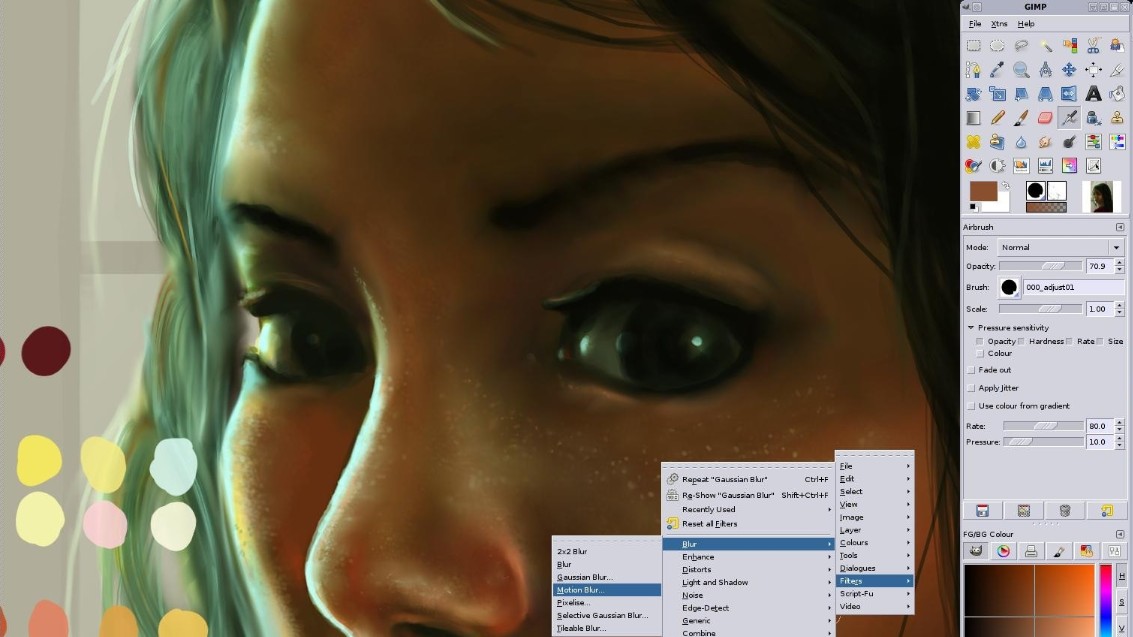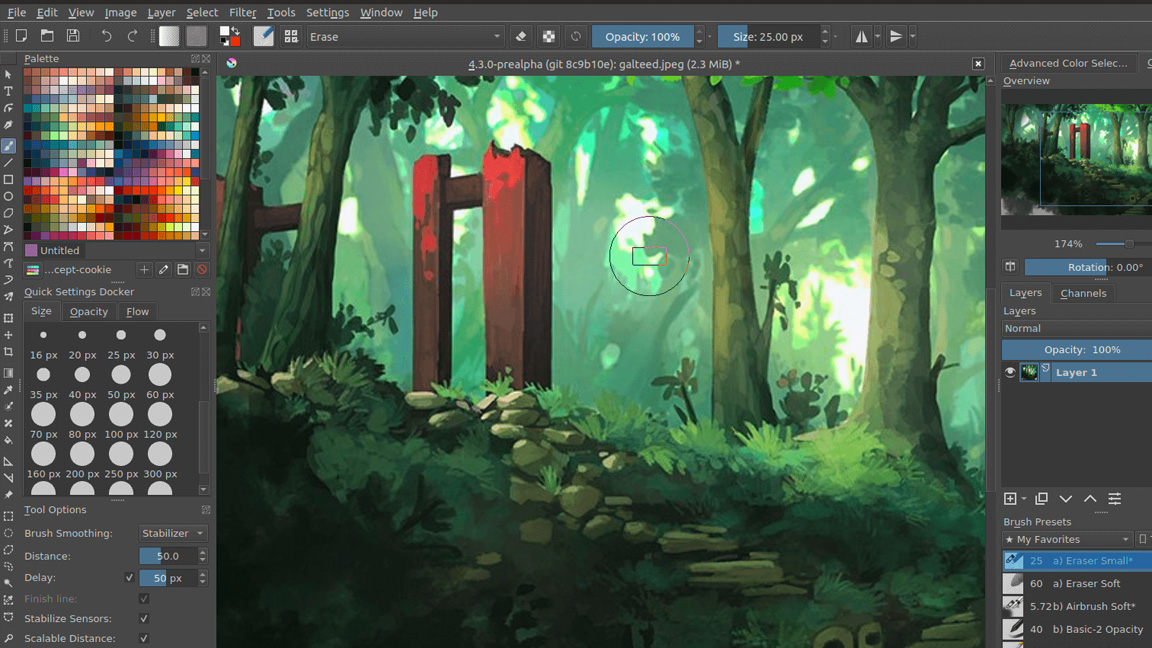How GIMP (unintentionally) changed the world
The software's update inertia had a bigger impact than you think.

For a small and unassuming open source project started as a college project in 1995, GIMP’s impact on the world may have been larger and wider reaching than its developers realised. And in ways they had never intended.
And with all that impact, there are still so many readers that are wondering, “What is this GIMP he is speaking of?” GIMP is actually an acronym for GNU Image Manipulation Program. (And if you want yet another headache, look up what the GNU acronym stands for!) Or as most people simply refer to it, a free Photoshop alternative.
Today in 2024, we are doing fairly well in that category (look at all these photo editing software options). Don’t get me wrong, there is still a lot lacking. And therein lay the rub, and the point of this article. As I put the blame largely in the laps of the GIMP developers.

Few realise that there actually were other image editing software packages before Photoshop. On high-end Sun workstations, yes. But even on early Macs, and I don’t mean MacPaint. One that comes to mind was called Digital Darkroom by Silicon Beach from 1987 (see the 1991 iteration above)! It was a very capable gray-scale only image editor that originated the magic wand tool, plug-in architectures and other things that found their way to Photoshop some years later.
But when Adobe launched the Knoll brother’s Photoshop, everything else soon fell away. That was okay because there was only one “graphics” platform then, the Mac, and PS ran on it. Plus, it was a different Adobe back then. PS was very affordable, and you got it on a disk, so essentially had it forever. It didn’t really have competition, but didn’t truly need it yet. And to their credit, Adobe was amazingly good on continually pushing the envelope of progress, even without competition biting at their heels. Credit once again to Adobe’s founder, John Warnock.
A New Century
By the turn of the millennium, the digital world had grown up a lot. Photoshop had cemented itself as the industry standard image editing tool, and had become commensurately expensive. Also by that time, GIMP had moved out of its college dorm room and into the open source community with volunteers around the world.
GIMP was hardly alone. There were many burgeoning open source projects in both the office and art categories. All of the Mozilla projects and its Foundation were beginning to form. As was Blender 3D and its Blender Foundation, Open Office, Wordpress and so many others that today, are staple applications in homes, schools and work environments.
Get the Creative Bloq Newsletter
Daily design news, reviews, how-tos and more, as picked by the editors.
A few friends from ad agencies and art studios would work on PS at the office, and use GIMP on their own projects at home. Back then it frequently didn’t do everything we wanted. But we were all very excited about the project, and had every expectation that it would grow and flourish. And even one day be a viable replacement for PS, which had become a monopoly. (While Krita was an existing fork of GIMP, few were familiar with it at that time (what's it like now? See my Krita vs Photoshop piece.)
And that optimism for GIMP may have been our collective downfall. Because I have a sneaking suspicion that many developers felt it would be a smash in a few years too. So why would anyone want to spend years of their lives to bring out a program that is flanked by Photoshop, the gorilla in the room, on one side. And a great FREE tool on the other? They didn’t.
While most other developers sat it out, waiting for GIMP to grow up, it never did. From the early 2000s until the late we kept hoping, but kept being disappointed.

The last thing I ever wish to do is to trample on other people’s good works. And there is a lot of good work in GIMP. But as creatives, well, we always found the program harder to use than it should be. Simply put, the interface kind of sucked. The windowing arrangement kinda sucked. The tool placement was awkward for those coming from PS (and by that point, we were ALL coming from PS).
Forums were filled with these complaints and they seemed to be ignored by the developers. At one point I recall one of them responding that, and I paraphrase “We are not looking to be a PS clone, we do things differently.” Which was always fine with us, but the ergonomics still needed to work. And they did not.
Artists around the world so wanted GIMP to live up to its promise. So much that third-party developers created plugins to make the GIMP interface more usable. And yes, more like PS. And despite this plugin’s popularity, the GIMP team stayed their course of a poor user interface, and glacially slow development.
Finally, as we moved past the 2010 era, other developers realised there was no reason to keep sitting things out. Photoshop was becoming an even more costly subscription only product, and GIMP, at least compared to where it should have been, was almost vaporware.

That little known fork of GIMP’s that finally landed on the name Krita was catching on. Affinity started development of its Photo application in 2009, and was finally released by 2015. And even the web based Photopea was soon offering a very pleasant PS-like user experience.
And where had GIMP been as these other applications were quickly catching up and in many ways surpassing it? It’s been languishing in version 2.X since 2004. Yes, literally 20 years!
There was once a joke floating around that Adobe was paying off GIMP developers to NOT work on the project. (I reiterate, this was a joke!)
To underscore the problem, and the impetuous for this article, the GIMP team announced that after years of waiting, GIMP 3.0 would be released in the Spring of 2024. It is now the Fall of the same year and we can only hope it is released before the year runs out.
For those that don’t know, yes, even free open source software developers usually do a lot better than this. A lot better. This isn’t just for a handful of digital artists, not by a long shot. Almost everyone wants an open source Photoshop. Artists, students, heck, anyone with a camera. Which today is all of us.
Not everyone wants to do 3D work, or build websites. And look how massively successful and professional both the Blender and Wordpress teams have been.
In a Parallel World

So that is the world we live in. But I can imagine a different world we may have had. One where the GIMP never came to be. Where its promise never hovered over us. And never prevented other developers, both open source and commercial, from jumping into the image editing fray and bringing great creative software to market.
I’m not saying that open source developers have some obligation to us, but...Yes, maybe I am. My father had an expression that my mother absolutely hated. But it says it best:
“Sh*t or get off of the pot!”
As increasing numbers of creatives have been trying to leave the stranglehold that Adobe has become, one of the most difficult tools to replace has been Photoshop. And as creatives are pondering Linux, a platform that neither Adobe nor Affinity support, a real alternative is needed.
Yes, Krita has matured into a very good program. But I can’t help but wonder where we would be today had GIMP either come through, or simply walked away 20 years ago.
For more creative software, see our pick of the best digital art software.

Thank you for reading 5 articles this month* Join now for unlimited access
Enjoy your first month for just £1 / $1 / €1
*Read 5 free articles per month without a subscription

Join now for unlimited access
Try first month for just £1 / $1 / €1

Lance Evans is creative director of Graphlink Media, a boutique creative marketing agency that specialises in building brands and has worked with such high-profile clients as Olive Garden, Miller Beer and AMEX. Lance was an early adopter of digital tools, and was on the original beta team for Photoshop. Lance has written for Creative Bloq on a wide range of topics, from technical photography tips to the ins and outs of branding.

